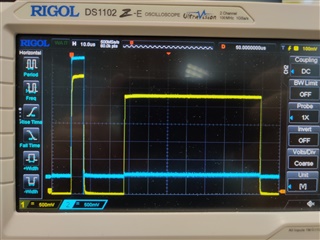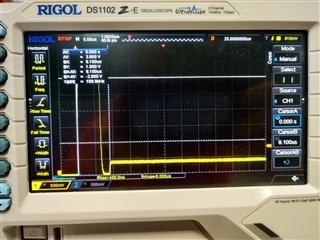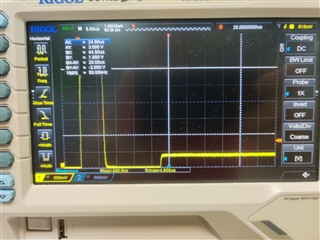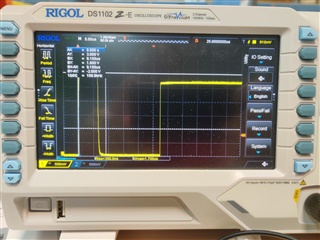Good day
Due to I am very new with NRF chips and I did not find direct answer on forum I require some clarification on that moment...
The task is to detect input pulse ( trailing edge ) of original length 2 us and extend it for <time_us>
For now I have implementation that uses PPI channel: GPIOTE input event lowToHigh + GPIOTE output task TOGGLE( init_low ). When I detect edge -> toggle task fires ( output becomes high ) -> I nrf_delay_us( <time_us> ) in in_event_handler and trigger task manually nrf_drv_gpiote_out_task_trigger( out_pin ) -> pin becomes low. Edge trigger delay is acceptable and is about 400 ns: blue - input signal, yellow - output
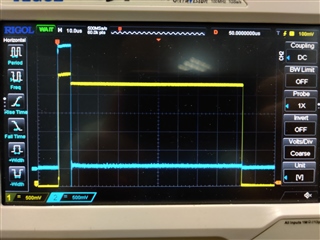

I plan to improve this implementation with hw timer + PPI to produce <time_us> delay with falling edge
But the question is whether it is possible to implement this using only one pin ?
I successfully get trailing edge detection but when I re-configure input pin for output inside in_event_handler and produce extended pulse I get such picture. Input and output pins are connected with resistor so we get original pulse -> "falldown" while re-configuring -> high level
